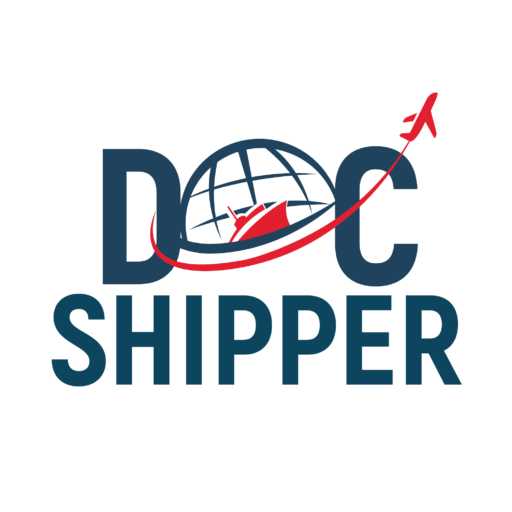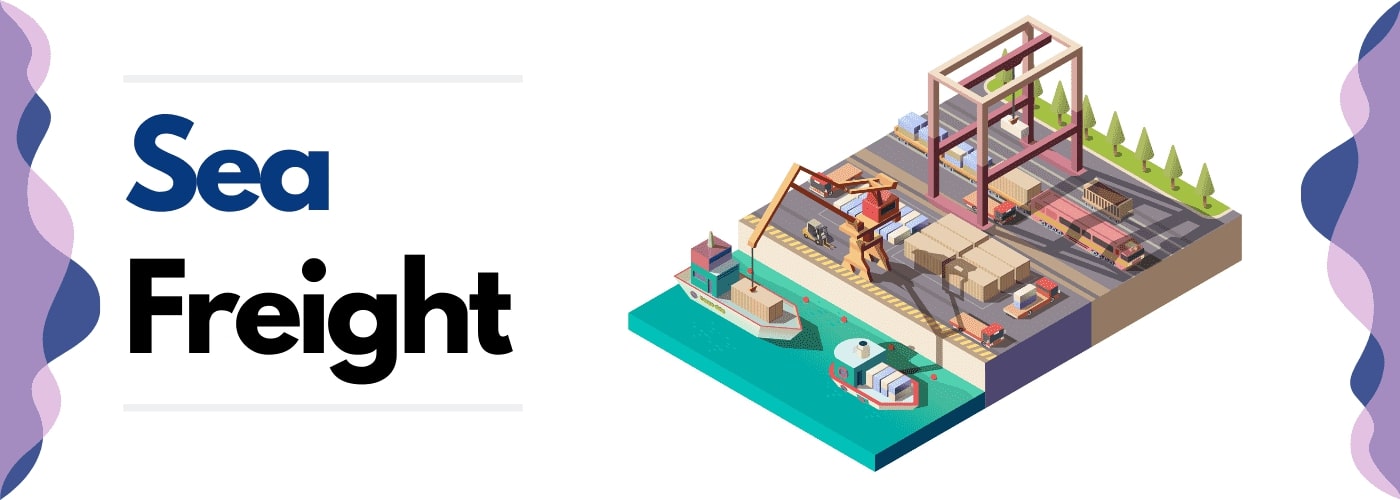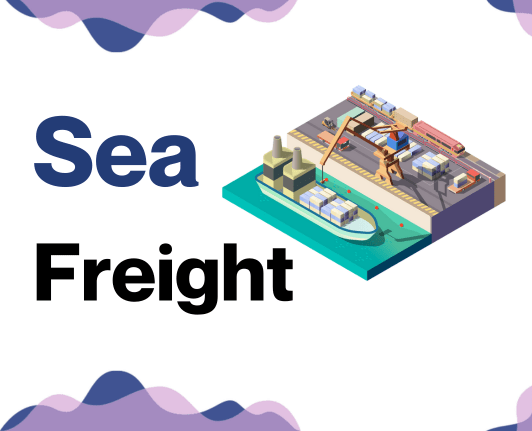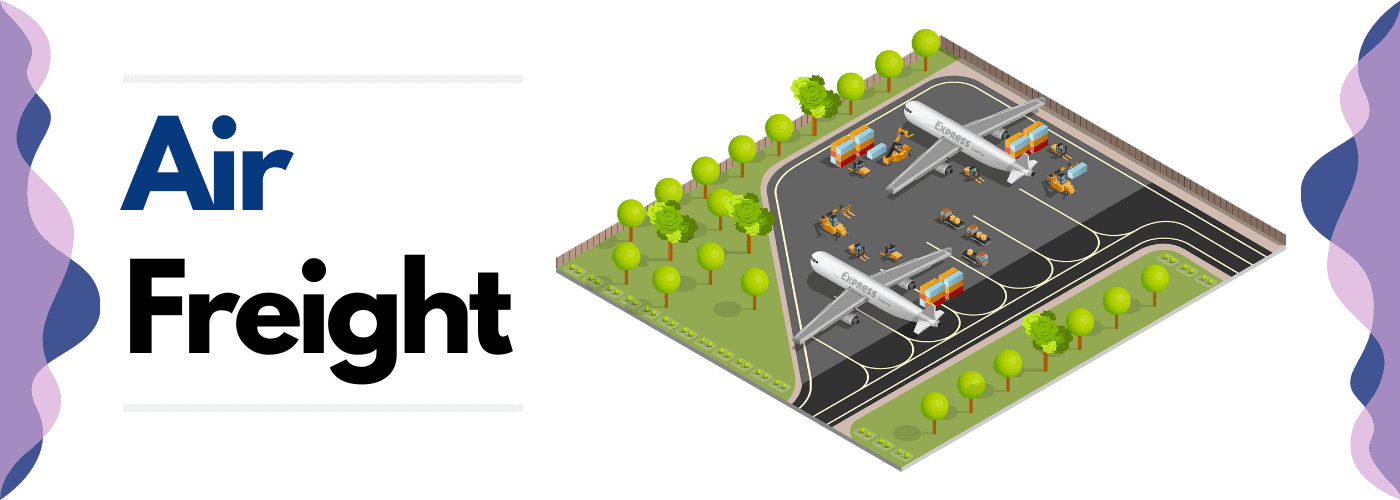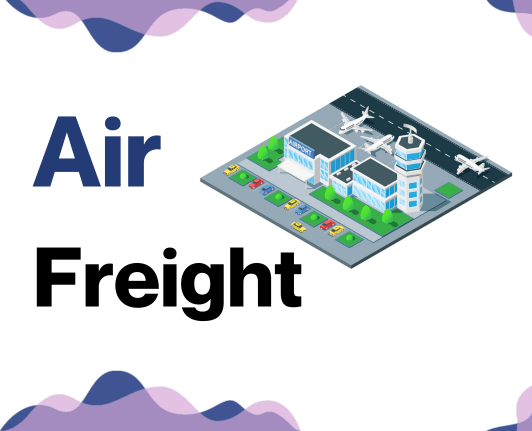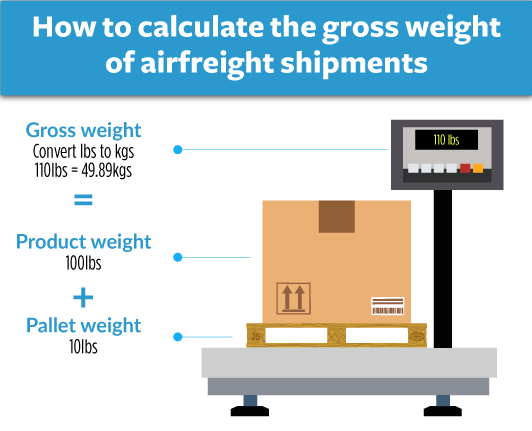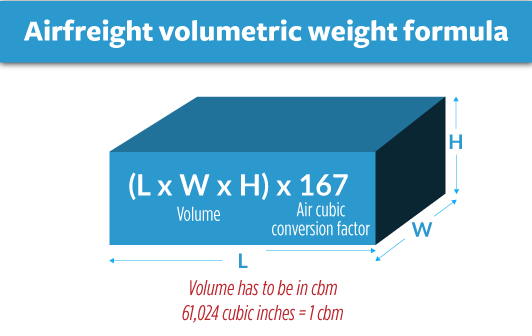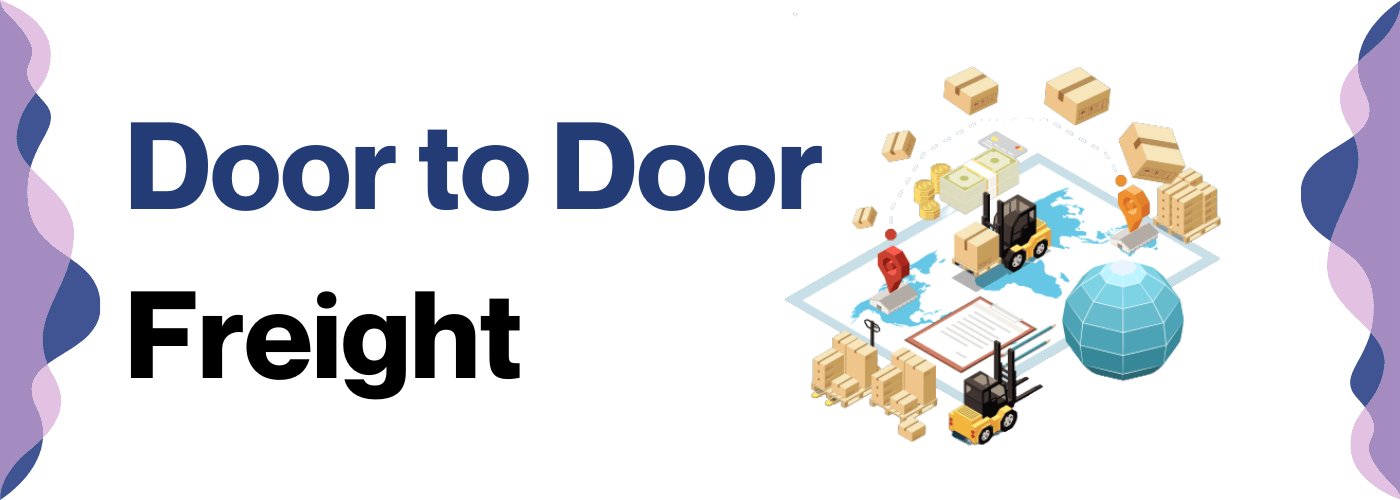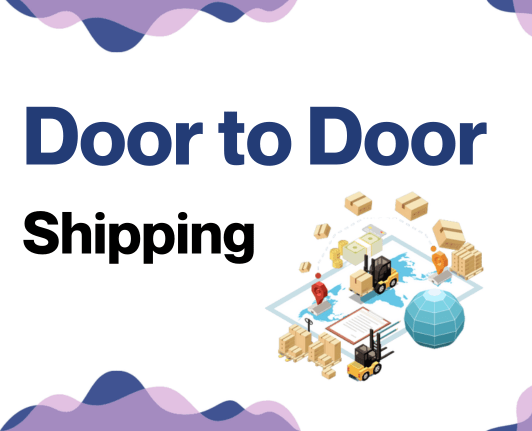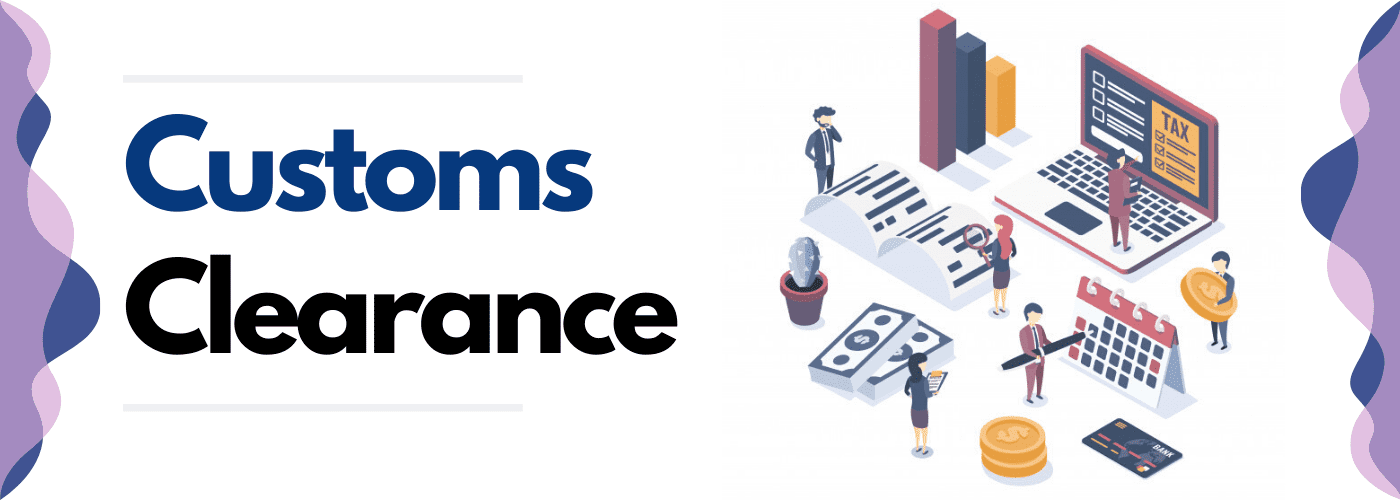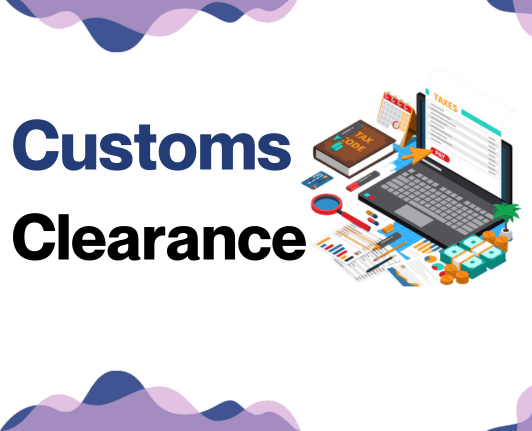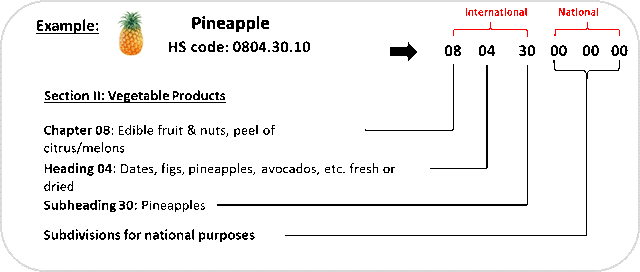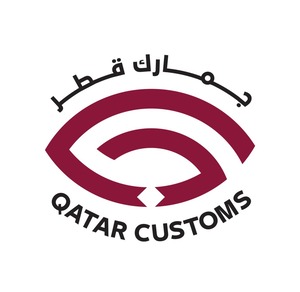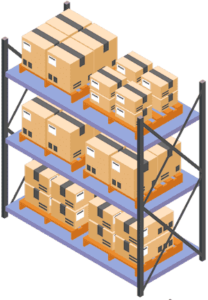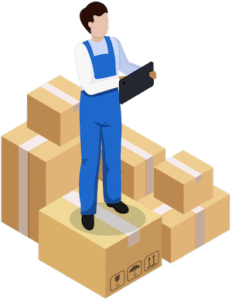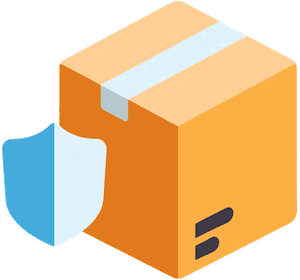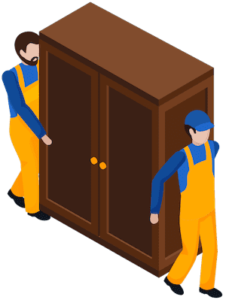Shipping goods between Qatar and the Netherlands might feel like trying to herd cats through a maze - messy and a bit chaotic! The process can be daunting, particularly when dealing with the main challenges such as understanding rates, transit times, and daunting customs regulations.
This guide aims to demystify these hurdles, offering clear insight into varied freight options, comprehensive information regarding customs clearance, duties, taxes, and indispensable advice tailored specifically for businesses traversing the logistical intricacies connecting these two countries. If the process still feels overwhelming, let DocShipper handle it for you! As your trusted international freight forwarder, we transform shipping complexities into straightforward processes, turning challenges into successes for businesses like yours, every step of the way.
Which are the different modes of transportation between Qatar and Netherlands?
Choosing the most suitable transport mode for shipping goods between Qatar and Netherlands can feel like solving a puzzle, but worry not. Despite the vast 4,845 kilometers distance and multiple international borders they straddle, you still have practical options. The catch is, picking the right one depends entirely on your cargo type, budget, and speed requirement. Imagine needing to deliver fresh dates from Qatar to Amsterdam, would you use a slow camel or hopping fast kangaroo? The answer might not be that simple, but this guide will break down your options, making that 'puzzle' a walk in the park.
How can DocShipper help?
Shipping goods between Qatar and Netherlands can seem daunting. That’s where DocShipper comes in! With expertise across sea, air, road, and rail transportation, we handle everything from customs clearance to administrative hoops, ensuring your shipment reaches smoothly and swiftly. Have a question or need a free estimate? Our consultants are just a phone call away, always ready to assist you.
DocShipper Tip: Sea freight might be the best solution for you if:
- You're dealing with hefty quantities or large-scale goods. Sea freight is your go-to for maximizing space without stretching your budget.
- Your cargo doesn't have an urgent deadline, as sea freight typically has longer transit times compared to air or rail.
- Your shipping routes are between major ports, allowing you to leverage the extensive global network of sea shipping lanes.
Sea freight between Qatar and Netherlands
Trading between Netherlands, the gateway to Europe, and Qatar, a country full of ambitious business projects, has never been more dynamic. Especially, the mighty sea freight, bridging key cargo ports like Rotterdam and Hamad, forming a key artery of commerce. Being the slowest yet a cost-effective solution, sea freight champions in accommodating high-volume goods, linking the pumping industrial hearts of both nations.
Now, there could be choppy waters ahead. We see businesses grappling with complexities and stumbling over typical mistakes in shipping between these two critical markets. Misunderstood customs clearance, murky knowledge of best practices, or the daunting administrative taskforce, any of this sound familiar? Fret not, our guide is your compass, steering you in mastering these shipping intricacies. Like skipping the concert traffic by knowing that secret side-street, we'll provide the insider tips to navigate these challenges with ease. Embrace your journey ahead, because, in international trade, every setback is a setup for a great comeback.
Main shipping ports in Qatar
Hamad Port
Location and Volume: Located on Qatar’s southeast coast in Umm Al Houl, Hamad Port is the main gateway for international cargo in the country. Spanning 28.5 square kilometers, it is one of the largest ports in the Middle East with a shipping volume of around 5 million TEUs.
Key Trading Partners and Strategic Importance: Hamad Port forms extensive trade networks with many countries, with key trading partners including China, India, and several Gulf and European nations. The port's strategic geographic location makes it a powerful link for the MENA region, connecting to 40 ports worldwide.
Context for Businesses: If you're considering expanding your trade footprint in the Middle East or looking to streamline your logistics with efficient customs services, Hamad Port offers a technologically advanced and highly connected option. With a sizable free trade zone available for business operations and direct maritime links to major international ports, this might be a key piece of your supply chain strategy.
Doha Port
Location and Volume: Doha Port is situated in the heart of Qatar's capital and offers commercial, passenger and naval services. The port handles approximately 800 vessels a year despite its relatively small size, largely due to its strategic location.
Key Trading Partners and Strategic Importance: Doha Port provides essential services to neighboring countries such as Oman, Iran, and India. It serves as a maritime gateway for local import and export activities, largely supporting the country's booming construction sector.
Context for Businesses: If your business is interested in accessing local markets within Qatar, or looks to transport smaller shipments in an economical and timely manner, Doha Port could be an important hub within your logistics strategy. Its central location within the city offers easy access to local distribution networks.
Ras Laffan Port
Location and Volume: Ras Laffan Port, found to the north of Doha, is spanned over an impressive area of 295 square kilometers, predominantly focusing on the export of Liquefied Natural Gas (LNG) and petroleum products.
Key Trading Partners and Strategic Importance: Ras Laffan enjoys robust trade relations with LNG and petroleum importers such as Japan, South Korea, India, and China. It serves as a strategic hub for Qatar's Gas and Oil Industry and hosts world's largest LNG exporting facilities.
Context for Businesses: If you’re in the petroleum or natural gas sectors, Ras Laffan offers the infrastructure required for high-volume LNG handling, with reliable services and access to international markets. The port may prove to be a feasible solution to cater to your energy-sector related logistical needs.
Note: While Al Rayyan Port and Mushayrib Port are also key maritime facilities in Qatar, they largely serve the local fishing industry rather than international trade, and thus don't usually feature prominently in shipping strategies for most international businesses.
Main shipping ports in Netherlands
Port of Rotterdam
Location and Volume: The Port of Rotterdam is situated in the south of Netherlands, and it's the largest port in Europe, and one of the world's busiest for international cargo. The port handled an impressive 14.8 million TEUs of cargo.
Key Trading Partners and Strategic Importance: Strategically placed in the Rhine-Maas delta, the port connects to major industrial and economic hubs in Europe. Key trading partners include Germany, Russia, the United Kingdom, and Belgium.
Context for Businesses: The Port of Rotterdam might be the perfect choice for businesses seeking to expand their transactions in European markets. With a multilayered approach to logistics, it offers seamless connectivity via rail, road, and inland waterways, along with extensive storage and transshipment facilities.
Port of Amsterdam
Location and Volume: A short distance north of Rotterdam lies the Port of Amsterdam, the second largest port in the Netherlands. With 4.8 million tons of cargo.
Key Trading Partners and Strategic Importance: The Port of Amsterdam is a vital transit point for goods going to the Netherlands and beyond. While it trades with several countries, Germany, the UK, and Scandinavia are among its top partners.
Context for Businesses: If you are looking to expand your cargo operations in Northern Europe, the Port of Amsterdam can be instrumental given its comprehensive facilities and convenient location. Additionally, if eco-friendly operations are a priority for you, the port's set sustainability goals might align with your company's vision.
Port of Groningen
Location and Volume: Located in the northeastern part of The Netherlands, the Port of Groningen is a critical hub for regional goods movement, handling over 200,000 TEUs annually.
Key Trading Partners and Strategic Importance: The port mainly deals in bulk cargo such as agribulk and minerals and trades significantly with Germany and Scandinavia.
Context for Businesses: The Port of Groningen may fit well into your shipping strategy if you deal in bulk commodities or are looking at opportunities in the Scandinavian or German markets. Its favorable geographical location, combined with excellent hinterland connections, offers businesses a swift and efficient logistic operation.
Port of Vlissingen
Location and Volume: The Port of Vlissingen, situated on the southwestern coast, is strategically located on the Scheldt river, making it attractive to bulk and break-bulk carriers.
Key Trading Partners and Strategic Importance: Given its location, the port conducts substantial trade with the UK, Germany, and Northern European countries.
Context for Businesses: If your business involves the transportation of bulk or break-bulk cargo, the Port of Vlissingen’s strategic location and expertise in these sectors can add value to your shipping strategy. It is particularly advantageous for operations targeted at the UK and Northern Europe.
Port of Terneuzen
Location and Volume: Situated on the Ghent-Terneuzen Canal, the Port of Terneuzen is a key Dutch port specializing in the movement of bulk cargo, notably dry, liquid, and break bulk.
Key Trading Partners and Strategic Importance: It significantly trades with Belgium, given its canal link to Ghent and its location on the border.
Context for Businesses: Businesses dealing with bulk cargo aiming for a presence in Belgium and the Dutch market might find the Port of Terneuzen economically beneficial. Its location and specialization in the handling of these types of cargoes make it a potentially ideal partner port.
These are only a few among the many bustling ports in The Netherlands. When considering which port best suits your needs, contemplate factors such as proximity to your targeted markets, the type of cargo you handle, and the port's capabilities. Whether you're a large multinational or a smaller enterprise, choosing the right port can significantly enhance your shipment and delivery efficiency and help you scale your business effectively.
Should I choose FCL or LCL when shipping between Qatar and Netherlands?
Choosing between Full Container Load (FCL) and Less than Container Load (LCL), or consolidation, could be a game-changer when shipping from Qatar to the Netherlands. It's not just about saving on costs; it's also about ensuring timely and smooth delivery. How do you decide? Let's delve into the specifics of each option to help you make a well-informed, strategic choice for your sea freight shipping strategy. Your business's success may well ride on this decision!
LCL: Less than Container Load
Definition: LCL, or Less than Container Load, refers to a shipping method where different consignments from various shippers share space in a consolidated container. This option is perfect for low-volume cargos, offering both accessibility and cost-effectiveness.
When to Use: If your cargo is less than 15 CBM (cubic meters), choosing LCL might be your best bet. The flexible pricing and departure dates associated with LCL freight make it a go-to for shippers with less comprehensive loads.
Example: A Doha-based furniture business selling to retailers in Amsterdam might only have 10 CBM of goods to ship. With LCL, they could share container space with other Qatari businesses shipping to the Netherlands, reducing their costs and maintaining a steady shipping schedule.
Cost Implications: The pricing for LCL shipments is based on the volume of items shipped, rather than the entire container. This means when using LCL to send goods between Qatar and the Netherlands, you pay only for the specific area your cargo occupies, not the entire container. However, remember that while the price per CBM might be higher in an LCL compared to a full container load (FCL), it is still the more cost-effective option for shippers with less volume.
FCL: Full Container Load
Definition: FCL, or Full Container Load, denotes an exclusive shipping method where you rent an entire container (either a 20'ft or a 40'ft) for your goods only.
When to Use: If your cargo volume is 13, 14, or even 15 cubic meters (CBM), FCL shipping is your ideal choice. This not only guarantees safety, as your container is sealed from origin to destination but also presents a cost-effective option for high-volume shipments.
Example: Suppose you are moving heavy, bulky machinery from Qatar to the Netherlands. To keep them safe and secure, you opt for an FCL container, ensuring that your goods remain in one container, eliminating the need for unloading and reloading at various ports.
Cost Implications: While an FCL shipping quote may seem pricier upfront because you're renting a full container, it becomes a cost-effective solution when transporting high-volume cargo overseas. The total cost is often less than shipping the same volume of goods through multiple LCL (Less than Container Load) shipments. This makes FCL shipping a budget-friendly option for exports of considerable volume.
Unlock hassle-free shipping
Confused about shipping choices between Qatar and Netherlands? Count on DocShipper, your dependable freight forwarder. We simplify the complexities of cargo shipping, providing expert advice on ocean freight. Our specialists weigh crucial factors such as cost, speed, and volume to help you decide between consolidation and full container loading. Don't guess - leave the decision-making to us! Connect with DocShipper for a stress-free shipping experience and a free estimation today!
How long does sea freight take between Qatar and Netherlands?
Ocean freight shipping from Qatar to the Netherlands typically averages between 20 and 34 days. But remember, these are just average times and actual transit may vary. Several factors like the specific ports used, the weight and the nature of your cargo come into play. For a tailored quote that suits your unique shipping needs, getting in touch with a renowned freight forwarder like DocShipper is beneficial.
Below you'll find a text-only table illustrating the average transit times in days from the main freight ports in Qatar to the Netherlands:
| From (Qatar Ports) | To (Netherlands Ports) | Transit Time (Days) |
| Hamad Port | Port of Rotterdam | 30 |
| Hamad Port | Port of Amsterdam | 30 |
| Ras Laffan | Port of Rotterdam | 30 |
| Ras Laffan | Port of Amsterdam | 30 |
*Do note that all these times are estimates and individual shipments may vary. Your freight forwarder will be able to assist in navigating these estimations.
How much does it cost to ship a container between Qatar and Netherlands?
Shipping a container from Qatar to the Netherlands can cost anywhere between $20 to $100 per Cubic Meter (CBM), but keep in mind that these are broad estimates. Unraveling the specifics of ocean freight rates requires an understanding of factors like your Point of Loading, Point of Destination, the carrier chosen, the type of goods being shipped, and the influence of unpredictable monthly market fluctuations on the shipping cost. Crunching these variables isn't something you need to stress over – our seasoned shipping specialists are here to do this intricate groundwork. All our quotes are customized to your specific needs, ensuring you receive the most competitive rates tailored to your unique shipment requirements.
Special transportation services
Out of Gauge (OOG) Container
Definition: An OOG container is a special type of shipping container designed to transport out of gauge cargo that exceeds standard container dimensions.
Suitable for: Out of gauge cargo such as oversized machinery, generators, construction materials, and equipment that can't fit into regular containers.
Examples: Heavy industrial machinery, wind turbines, or agricultural equipment.
Why it might be the best choice for you: If your business deals with oversized items that don't fit into conventional containers, OOG containers provide the flexibility you need for transportation between Qatar and the Netherlands.
Break Bulk
Definition: Break bulk refers to shipping large items individually, not in containers. It's one of the oldest methods of shipping and involves goods that are loaded – 'broken' into parts – onto the vessel one piece at a time.
Suitable for: Non-containerized load, loose cargo like machinery, wood, steel or vehicles, and goods packed onto pallets.
Examples: Iron or steel beams, timber, and construction machinery.
Why it might be the best choice for you: If you have goods that can't be containerized or suitably packed for
Dry Bulk
Definition: Dry Bulk shipping involves transporting dry, unpackaged goods that are unloaded at the destination via means like conveyer belts.
Suitable for: Commodities in large quantities like coal, iron ore, grains or sand.
Examples: Sand for the construction industry, grain for food industries.
Why it might be the best choice for you: If your cargo contains loose goods in massive quantities that are best transported unpackaged, then dry bulk will be the most cost-effective and efficient shipping method.
Roll-on/Roll-off (Ro-Ro)
Definition: Ro-ro shipping refers to vessels where vehicles, trailers, or railroad cars roll on and off the ship on their own wheels or with a platform vehicle.
Suitable for: Self-propelled, towable or static goods like cars, trucks, semi-trailer trucks, trailers, and railroad cars.
Examples: New or used cars, buses, trucks, construction and agriculture machinery.
Why it might be the best choice for you: If you have self-propelled or towable machinery or vehicles, ro-ro shipping ensures the safe transportation of these goods without the need for disassembling them.
Reefer Containers
Definition: Reefer shipping involves the use of refrigerated containers to transport temperature-controlled cargo.
Suitable for: Perishable goods like fruits, vegetables, dairy products, or medicinal products that require specific temperatures for transportation.
Examples: Fresh flowers, meat, fish, fruits and pharmaceuticals.
Why it might be the best choice for you: If your business involves transporting temperature-sensitive goods in a controlled temperature environment, reefer containers ensure your cargo is delivered in optimal condition.
Understanding which shipping option matches your business needs can be challenging. The professionals at DocShipper are here to help you navigate these decisions. Get in touch with us today for a free shipping quote in less than 24h.
DocShipper Tip: Air freight might be the best solution for you if:
- You're up against the clock or have a non-negotiable delivery date. Air freight is your fastest bet for meeting tight timelines.
- Your shipment is on the smaller side, falling below 2 CBM. Air freight is particularly well-suited for compact cargo loads.
- Your goods are destined for locations that aren't well-served by maritime or rail options. Air freight expands your reach by connecting you to a vast array of international airports.
Air freight between Qatar and Netherlands
Air freight from Qatar to the Netherlands offers speedy delivery and solid reliability for your shipment. Imagine it's like taking a direct flight; you're there in no time with barely a glitch. It's especially cost-effective for small but valuable cargo - think jewelry or electronics. Now, many shipper's see this method and jump right in, but things can swiftly escalate if you don't understand the process fully.
Simple missteps, like using the wrong weight formula when pricing your goods, can inflate your costs dramatically. It can be like ordering a cup of coffee and being charged for a full meal! We're here to steer you on the right path, so you can avoid these common pitfalls and make the most of your air freight journey.
Air Cargo vs Express Air Freight: How should I ship?
Struggling to choose between Air Cargo and Express Air Freight for shipping goods from Qatar to Netherlands? Let's simplify. While Air Cargo tucks your shipment in alongside others within a commercial airline, Express Air Freight gets it a private jet experience on a dedicated plane. Now, let's delve into the specifics and find out which option synchronises best with your unique business requirements.
Should I choose Air Cargo between Qatar and Netherlands?
If your goods shipment between Qatar and the Netherlands weighs between 100-150 kg (220-330lbs), air cargo becomes a highly cost-effective and reliable option. Airlines such as Qatar Airways - their cargo division Qatar Airways Cargo - and Netherlands-based KLM Royal Dutch Airlines via KLM Cargo are worth considering. Although slightly longer in transit due to fixed schedules, this method can provide significant savings and predictability. Weigh your options carefully, considering these factors alongside your budgetary constraints.
Should I choose Express Air Freight between Qatar and Netherlands?
Express Air Freight is a streamlined service utilizing cargo-only planes. This excellent choice specializes in shipments under 1 CBM or 100/150 kg (220/330 lbs) of cargo. Moving goods between Qatar and the Netherlands swiftly could make your business more competitive. Renowned express couriers like FedEx, UPS, and DHL offer such speedy service. If you have small, urgent shipments, opting for Express Air Freight might be the strategic choice to maintain your supply chain's speed and reliability. Remember, quickness comes at a price but could deliver significant bang for your buck.
Main international airports in Qatar
Hamad International Airport
Cargo Volume: Hamad International Airport handled approximately 2.6 million tons of cargo, demonstrating its massive cargo handling capacity.
Key Trading Partners: Hamad Airport serves as the core logistics hub for major global trade routes, including trade with countries like China, India, Germany, Japan, and the United Arab Emirates.
Strategic Importance: As the largest and most crucial airport in Qatar, Hamad International Airport is the main gateway for imports and exports for the region. Its geographic location also makes it an important transit hub for global freight.
Notable Features: The Cargo Terminal at Hamad Airport is a fully automated system capable of handling a large volume of cargo efficiently. The terminal is designed to handle 1.4 million tons of annual cargo.
For Your Business: If your business involves high-volume cargo transit, Hamad International Airport can become an invaluable asset given its ability to handle large volumes of cargo and its sophisticated cargo terminal. Matching your supply chain with its efficient air routes could unlock new efficiencies and opportunities.
Doha International Airport
Cargo Volume: Although smaller than Hamad, Doha International Airport manages significant cargo operations, unloading over 750,000 tons.
Key Trading Partners: Doha serves as an essential trading port with countries like Saudi Arabia, the USA, and Spain, among others.
Strategic Importance: Even though Hamad Airport has superseded it, Doha International remains a vital cargo handling installation due to its proximity to Doha city, the economic heart of Qatar.
Notable Features: A full-service freight terminal exists at Doha International, including significant cold storage and perishable goods handling capabilities.
For Your Business: Especially for perishable goods, the infrastructure at Doha International can provide optimal storage and transportation conditions, ensuring your cargo reaches its destination in top condition. Similarly, its strategic location makes it easily accessible, expediting your transit times.
Please note that the official websites of these airports could not be found at the moment of the search. Please look for updated information online.
Main international airports in Netherlands
Amsterdam Airport Schiphol
Cargo Volume: The cargo volume was approximately 1.59 million tonnes.
Key Trading Partners: Major trading partners include China, the USA, Russia, and the UK.
Strategic Importance: As Europe's third largest cargo airport, Schiphol is at the heart of the continent's trade and transport network, offering a tremendous amount of connectivity to various global markets.
Notable Features: The airport houses a state-of-the-art Cargo Community system, superior cargo facilities, and dedicated freighter slots.
For Your Business: Schiphol's extensive network and modern infrastructure might provide a fast and efficient solution for your goods movement needs, particularly if you're trading with Europe, Russia, China, or the US.
Rotterdam The Hague Airport
Cargo Volume: Although smaller compared to Schiphol, ROT still manages substantial cargo traffic. Specific numbers are not disclosed, but it regularly services freight flights.
Key Trading Partners: Main trading partners cover various European countries, particularly Germany, France, and the UK.
Strategic Importance: Conveniently located in one of Europe's largest ports, ROT is strategically important for the seamless transition of goods from sea to air or vice versa.
Notable Features: It offers a streamlined customs process and its close proximity to the port facilitates multimodal transport.
For Your Business: If your operations involve multifaceted shipping methods, especially sea-air, Rotterdam The Hague Airport may offer an efficient, streamlined solution to your transport needs.
Maastricht Aachen Airport
Cargo Volume: The airport oversaw more than 185,000 tonnes of cargo in the recent years, marking a 3% increase over the previous year.
Key Trading Partners: MAA primarily services Europe, Asia, and North America.
Strategic Importance: With its 24/7 operating permit, Maastricht Aachen functions as a vital hub for all-day operations and timed logistics.
Notable Features: MAA has the flexibility of a regional airport and ensures shorter turnaround times. Also, it has a dedicated cargo terminal.
For Your Business: Consider MAA if your business involves timed logistics or requires quick turnaround on consignments, particularly if you're dealing with Asia, Europe, or North America.
Eindhoven Airport
Cargo Volume: The airport doesn't openly disclose specific cargo data, but it does handle a significant portion of Europe's airfreight.
Key Trading Partners: Its key trading partners include European nations, particularly those in the South like Spain and Italy.
Strategic Importance: Situated in the Brainport region, an innovative tech hub, Eindhoven plays a significant role in the swift transport of high-tech goods.
Notable Features: Its focus on efficient operations offers quicker handling times, making it an attractive choice for businesses.
For Your Business: Eindhoven Airport can be a vital asset if your company trades high-tech products and needs swift and safe transport within Europe.
Groningen Airport Eelde
Cargo Volume: An exact figure is not publicly available, but Eelde is known to support sizeable cargo operations.
Key Trading Partners: Trading partners primarily consist of Scandinavian countries as well as Germany and the UK.
Strategic Importance: Groningen Eelde holds strategic importance for businesses in the Northern Netherlands and Germany due to its geographical location.
Notable Features: It boasts wide-open cargo handling spaces with less congestion than larger airports.
For Your Business: If your company operates in Northern Europe, especially in Scandinavian countries, Groningen Eelde might provide a less congested and efficient routing alternative.
How long does air freight take between Qatar and Netherlands?
Shipping between Qatar and the Netherlands via air freight typically takes between 1-3 days. However, it's important to note that these are average transit times and can vary. Factors such as the specific airports used, the weight, and the nature of your goods can significantly affect this timeframe. For precise shipment times, it's always best to touch base with a seasoned freight forwarder like DocShipper, who can provide you with an exact timeline based on your unique needs.
How much does it cost to ship a parcel between Qatar and Netherlands with air freight?
The average air freight rate from Qatar to the Netherlands generally ranges from $3-$6 per kg. However, predicting an absolute figure isn't plausible due to several factors including the distance from the departure and arrival airports, parcel dimensions and weight, and nature of goods. But worry not–our team is adept at evaluating these variables to provide you with the most competitive rates, custom-tailored to your specific needs. Contact us and receive a free quote within 24 hours.
What is the difference between volumetric and gross weight?
Gross weight refers to the total weight of your shipment, including the product, packaging, pallets, etc. Volumetric weight, on the other hand, reflects the amount of space your cargo occupies in the aircraft.
To calculate the gross weight for Air Cargo and Express Air Freight services, the weight of every item, including packaging materials like boxes, pallets, and even the packing tape, is made in kilograms (kg).
For instance, consider you have a shipment whose actual weight, inclusive of the packaging, is 35 kg (or 77.2 lbs). This would be your gross weight.
For volumetric weight, which is essential for air freight given planes have limited space, the calculation differs based on shipping method. In Air Cargo, multiply the length, width, and height (in cm) of each parcel and then divide by 6,000. However, for Express Air Freight services, divide by 5,000 instead.
For example, suppose your shipment measures 60cm x 50cm x 40cm. Your volumetric weight for air cargo would be (605040)/6000, equaling approximately 20 kg (or 44.1 lbs). Using Express Air Freight services, the calculation (605040)/5000 would equate to roughly 24 kg (or 52.9 lbs).
In freight shipping, the higher of the gross and volumetric weight determines the shipping price. If the volumetric weight exceeds the gross weight, as in our Express Air Freight example, it is the weight used for the freight cost. This practice ensures fair pricing, reflecting both the weight and space taken by shipments.
DocShipper tip: Door to Door might be the best solution for you if:
- You prioritize a smooth, hassle-free shipping experience from start to finish. Door-to-door services manage the entire journey, from initial collection to ultimate delivery.
- You appreciate streamlined communication and would rather deal with one person. A dedicated agent is usually assigned to oversee every detail of your door-to-door shipment.
- You want limit the number of touchpoints for your cargo. Door-to-door services reduce the frequency of transitions between various transport methods, thereby lowering the likelihood of damage or loss.
Door to door between Qatar and Netherlands
International Door-to-Door shipping, the star player of hassle-free logistics, connects Qatar to the Netherlands with unparalleled convenience. This service handles everything: pick up, transportation, customs, and delivery. It's as simple as sipping your morning coffee. Packed with benefits like speed and cost-efficiency, this option is perfect for you. Ready to unravel its wonders? Let's dive in!
Overview – Door to Door
Shipping between Qatar and Netherlands can be a tough, tangled web of complexities. But, what if you could delegate the handling of formalities and transportation? That's the ease Door to Door shipping provides, a complete end-to-end solution. With this method, we tackle every step for you, from packaging to customs clearance. Noticeably, it's our most-sought service, for good reasons too – it's practically hassle-free. Yet, there are trade-offs; it might cost more than other options and could take slightly longer. If simplicity and peace of mind rank high on your shipping needs, Door to Door could be the perfect fit for you.
Why should I use a Door to Door service between Qatar and Netherlands?
Ever thought logistics could be as stress-free as sipping a cool mocktail on a relaxing Qatar beach? Well, that's exactly what door to door services between Qatar and the Netherlands can offer you!
1. Elimination of Logistics Stress: With door to door service, you're free from the hassles of managing various transport segments. From your factory in Qatar to your client's doorstep in the Netherlands, this service handles every little detail, all under one roof!
2. On-Time Delivery: Have an urgent shipment? No worries! Door to door services thrive on their ability to deliver timely results. They manage every step, ensuring your shipment avoids any unnecessary delays.
3. Handling of Complex Cargo: Got a sensitive shipment? Leave it to the experts. Door to door services have specialized staff trained to handle complex cargo. They'll treat your important consignments with the care and attention they deserve.
4. Convenience: This isn't just a service; It's a convenience provider. With door to door services, you won't need to lift a finger! The transportation, customs, tracking - everything is taken care of until the final delivery of your packages.
5. Complete Tracking: With the entire shipping process under one banner, you can seamlessly track your shipment from point A to B. This provides a sense of security, and allows you to keep your clients updated with real-time information.
With these unbeatable benefits, door to door service between Qatar and the Netherlands is like your personal logistics genie. Say goodbye to shipping stress and hello to a whole new level of convenience!
DocShipper – Door to Door specialist between Qatar and Netherlands
Experience seamless, hassle-free Door to Door shipping from Qatar to the Netherlands with DocShipper. Entrust us with your logistics needs; from packing to transport, to customs - we steer clear of all complexities for you. With our vast expertise in shipping goods utilizing every method, rest assured your cargo is in expert hands. Get the peace of mind that comes with a dedicated Account Executive, always ready to provide you with logistical solutions tailored to your needs. Drop us a line today for a free cost estimate within the next 24 hours, or for a no-strings-attached consultation with our team.
Customs clearance in Netherlands for goods imported from Qatar
Customs clearance is a crucial step for businesses shipping goods from Qatar to the Netherlands. It's a labyrinth of complexities, brimming with potential pitfalls from unexpected fees to surprise charges. Understanding dutifully the nuances of customs duties, taxes, quotas, and licenses is key to prevent your goods from getting snarled in red tape.
With the following sections, we will explore each area to equip you with necessary insights for a seamless shipping experience. Remember, DocShipper can navigate these challenges for any type of goods, anywhere. Keep our team in the loop with the origin, value, and HS Code of your goods, and we'll take it from there—delivering an estimate to kick-start your project.
How to calculate duties & taxes when importing from Qatar to Netherlands?
Shipping goods across international borders can feel like navigating a maze, with one of the complexities being in determining the customs duties payable. First and foremost, it's essential to know that these duties are estimated based on several key parameters. This includes the actual country where the goods were produced—known as the country of origin, alongside other important aspects like the Harmonized System (HS) code - an international standard for categorizing your goods, the Customs Value (the total cost of the goods), and the tariff applicable to your specific item type in the destination country. On top of these factors, there may be additional fees or taxes for particular types of products.
Now that you have the framework, your very first step in the process of estimating customs duties when you're bringing goods from Qatar into the Netherlands is pinpointing your product's country of origin. This means the place where your commodities were manufactured or produced. This piece of information is pivotal as it not only influences the tariff rate but also could determine whether specific preferential treatment or duties may apply under international trade agreements.
Step 1 - Identify the Country of Origin
Determining your goods' country of origin is not just a box-ticking exercise - it's the pivot point of your shipping operation. First, it's fundamental to identifying your Harmonized System Code (HS Code), a vital code in easing Customs clearance. Second, it influences the importer's eligibility to benefit from any preferential trade agreements. Qatar and Netherlands, for instance, enjoy several agreements that may lower or nullify certain duties.
Third, the origin country can steer the amount of duty paid. This is highly relevant as particular rates are applicable to specific countries. Fourth, the EU has distinctive import restrictions based on the origin country. Knowing these rules can help you sidestep potential obstacles at the border. Lastly, the origin country forms the basis of necessary import documentation, such as the commercial invoice or Certificate of Origin.
On practical grounds, start with an accurate understanding of your country of origin. Research on bilateral agreements between Qatar and the Netherlands, available on your local government customs website could offer useful insights. Stay adaptable and well-informed as these agreements are periodically renegotiated. Always look ahead for anticipated changes to trade agreements or import restrictions to keep your logistics running smoothly. It might seem daunting, but step by step, you'll master international shipping in no time.
Step 2 - Find the HS Code of your product
An integral part of international shipping logistics, the Harmonized System (HS) Code is a standardized system of names and numbers used by customs authorities worldwide in classifying imported and exported products. These classifications help determine the tariffs, taxes, and regulations that apply for each type of product.
In many cases, the most straightforward way to determine the HS Code for a product is to consult with the supplier. They are often well-versed in the details of their goods, including import and export regulations.
However, if you find this option unavailable, there is indeed an easy, step-by-step process to determine the HS Code independently.
Firstly, navigate to the Harmonized Tariff Schedule website. This website is a dedicated HS Code lookup tool.
Next, input your product name into the search bar. This should yield a selection of potential matches.
Then, locate either the Heading or Subheading column. These columns list the HS Codes for each product and match.
Note, though, that accuracy is crucial when handling HS Codes. An incorrect HS Code might result in product shipment delays and potential fines arising from misclassification of goods. It's therefore paramount to ensure the identified HS Code is the right one that appropriately matches the product description.
Here's an infographic showing you how to read an HS Code.
Step 3 - Calculate the Customs Value
Understanding customs value can be a tricky part of the shipping process, but don't worry - it's simpler than it seems. You might be thinking that customs value is merely the price of your goods, but it's not. The customs value, in fact, is the Cost, Insurance, and Freight (CIF) value.
Here's how it works: Imagine you bought goods from Qatar for $500. Add to that the cost of international shipping, which we'll assume is $100, and the insurance cost, let's say $20. Hence, the CIF value or the customs value in this scenario would be $620. This is the value you'd declare at the Netherlands customs for your imports from Qatar, not simply the base $500 product cost. It's crucial to get this right to avoid potential headaches with customs complications down the line!
Step 4 - Figure out the applicable Import Tariff
An import tariff refers to a tax applied by the destination country on imported goods, which varies depending on the goods' type and origin country. In the Netherlands, being a part of the European Union, import tariffs follow the standards set by the EU's Common Customs Tariff.
To determine the applicable tariff for your goods imported from Qatar, visit the TARIC System - European Customs and follow these two steps:
1. Enter the HS code that you identified earlier along with Qatar as the country of origin.
2. Review the duties and taxes applied to your product.
For instance, if you're importing plastic kitchenware from Qatar with an HS Code of 392410, and the system shows a tariff of 6.5%, and your CIF (Cost, Insurance, and Freight) is $10,000, then you'd calculate your import duty as follows: $10,000 x 6.5/100 = $650. So, you'd pay a duty of $650.
Remember, the CIF value and the tariff percentage are just examples. The actual values will depend on your particular situation, so always refer to the TARIC system to get accurate information for your logistics requirements.
Step 5 - Consider other Import Duties and Taxes
Beyond the standard tariff rate, additional import duties may apply which vary based on the country of origin and the nature of the product. Excise duty is one such cost that potentially applies to goods like alcohol or fuel. Another tax, referred to as the anti-dumping tax, is levied on products imported from a country selling goods cheaper than their production cost to protect the local industries.
Most importantly, we cannot overlook the Value Added Tax (VAT). In The Netherlands, the standard VAT rate is 21%. To calculate the VAT, you take the customs value of the products (for example, $20,000), add the transportation and insurance costs ($2,000) and the customs duties, let's assume they are 3% ($660). Adding these all up, you get a total of $22,660. Now, you apply the VAT rate of 21% on this sum, which comes out to $4,758.6.
Please note these are hypothetical examples and the actual rates may vary. Thorough research and understanding the nuances will help manage costs and enhance profits when shipping from Qatar to The Netherlands.
Step 6 - Calculate the Customs Duties
Calculating customs duties is a consequential yet often confusing task. Let's simplify it. The formula is straightforward:
Customs Value (Value of Goods + cost of shipping and insurance) x Customs Duty Rate = Duty to be paid.
First, if you ship a machine from Qatar to Netherlands worth $1000 with no VAT involved, and the customs rate is 3%, your customs duty is $30 (10000.03).
Second, consider you're importing equipment worth $5000, shipped at $500 with an insurance cost of $100, and attracting 5% customs duty and 20% VAT. Your customs value is $5600. So, your customs duty is $280 (56000.05) and VAT is $1726 (5600+280)0.20.
Lastly, shipping artwork valued at $2000, shipping and insurance costs at $300, a customs duty rate of 4%, VAT 20%, an anti-dumping tax of 10%, and excise duty 7%. Your customs duty is $92 (23000.04), VAT is $535 (2300+92+230)0.20, anti-dumping tax is $230 (23000.10), and excise tax is $234.04 (2300+92+230+535)0.07.
Customs calculations can be taxing. At DocShipper, we can manage all your customs clearance needs globally, ensuring you never pay a penny more. Contact us today for a free quote in less than 24 hours.
Does DocShipper charge customs fees?
Understanding customs fees can be daunting. As a licensed customs broker in both Qatar and the Netherlands, DocShipper will charge for the customs clearance service, not the actual customs duties or taxes - those go directly to the government. We'll provide all relevant documentation from the customs office, reassuring you that you're only paying what's imposed by the government. It's about transparency and trust, and we're here to navigate these complex waters with you, simplifying your shipping experience.
Contact Details for Customs Authorities
Qatar Customs
Official name: General Authority of Customs, Qatar.
Official website:www.customs.gov.qa/
Netherlands Customs
Official name: Dutch Customs (Douane Nederland)
Official website: www.belastingdienst.nl/
Required documents for customs clearance
Baffled by paperwork for customs clearance? It's a hurdle for many businesses. We'll demystify key documents like the Bill of Lading, Packing List, Certificate of Origin, and Documents of Conformity. Let's conquer that red tape together!
Bill of Lading
Businesses shipping goods between Qatar and the Netherlands, the Bill of Lading is your best friend. It's an official document that signifies the handover of ownership from the shipper to the receiver. Imagine you’re passing a baton in a relay race - that's the Bill of Lading for you. For a smooth process, consider opting for 'telex' release, which is an electronic version of this document. It speeds things up and reduces the paperwork.
For air cargo, we talk about the Air Waybill (AWB), a similar document in the aviation industry. Remember, having these documents in order is critical to getting your goods through customs without a hitch. Pro tip: keep multiple copies, ensure all details are accurate, and input any tracking numbers where applicable for seamless international shipping.
Packing List
A Packing List might seem like a humble checklist, but when you're shipping from Qatar to Netherlands, it wearing multiple hats is its job! It not only provides a comprehensive overview of items in your shipment but also ensures smooth navigation through both Qatari and Dutch customs. Craft this like you're telling a story about your goods - be accurate, detailed, and transparent.
If your shipment is a box of ceramics, your Packing List should make it feel palpable to the customs officer. Misrepresenting or overlooking details can lead to delays or even penalties, whether you're using sea or air freight. Think back to when you send a festive package via local post - how a detailed list expedites the whole process. Similarly, a crisp Packing List is your shipment's fast track ticket through customs.
Commercial Invoice
The commercial invoice is your hero when shipping goods from Qatar to the Netherlands. This detailed billing statement between your business and your buyer holds great authority at customs. Besides the complete buyer and seller information, it must state the traded goods' price, quantity, and description, along with Harmonized System (HS) codes.
It's crucial that these commodity codes align with those on your other shipping documents; mismatched codes can delay clearance, causing a ding to your business's shipping credibility and potentially increasing costs. A tip to save you time and money: digitize your invoices for ease of access and to diminish human error. Remember, accuracy in your commercial invoice isn't just about getting the shipment across, it's about building a hassle-free business relationship - with your buyer and with customs. Happy shipping!
Certificate of Origin
Nailing the nitty-gritty of customs clearance while shipping from Qatar to the Netherlands? Then you know gaining those preferential duty rates can be a real game-changer for your bottom line. At the heart of this lies the Certificate of Origin, your golden ticket that verifies the country in which your goods are made.
For instance, let's say you're shipping cutting-edge tech gadgets made in Doha. By stating Qatar as your country of manufacture with a Certificate of Origin, you could access favorable tariff conditions that make your shipping cost-effective. Indeed, this underestimated yet mighty document could be the vessel that steers you towards substantial savings. So remember, never cast off towards the Netherlands without it. Your wallet will thank you.
Certificate of Conformity (CE standard)
When shipping goods from Qatar to the Netherlands, your products may require a Certificate of Conformity (CE standard). This certificate certifies that your products comply with European health, safety, and environmental protection laws, which are key for market entry into European countries like the Netherlands. Unlike general quality assurance, the CE standard is a specific regulatory requirement and not merely a quality checkpoint.
By having your goods CE certified, you're essentially confirming that they meet all the necessary EU requirements. If you're familiar with US standards, think of it as similar to the FCC Declaration of Conformity. So, prepare to grab that CE mark to ensure a smooth customs clearance process, and remember, lack of it could lead to delivery delays or fines. It's a tiny sticker with a big impact, streamlining your entry into the lucrative European market.
Your EORI number (Economic Operator Registration Identification)
Moving goods between Qatar and the Netherlands requires an EORI number, your business's unique identifier in the world of imports and exports. How does it work? Picture it like your business's passport in Europe, required for tracking your transactions within the EU. Obtaining it isn't an uphill battle either; simply register with the customs authorities in your country of establishment.
Don't underestimate its importance. Without it, any cargo you're shipping could face delays or even be held by customs. Let's take your shipment of consumer electronics from Doha to Rotterdam, for example. Without your EORI, your high-value goods risk being stuck at Dutch customs. Remember, in international trade, time means money. Don't let avoidable snags cut into your profit margins. Getting your EORI number is a small but critical step in streamlining your Qatar-Netherlands trade operations.
Get Started with DocShipper
Wading through customs red tape can be daunting and time-consuming. Why not let DocShipper take the wheel? We specialize in end-to-end customs clearance between Qatar and the Netherlands, navigating all the paperwork and procedures with ease. Forget the stress, we've got you covered. Refocus on growing your business and get a free custom quote from us in less than 24 hours. Let's make shipping a breeze!
Prohibited and Restricted items when importing into Netherlands
When shipping to the Netherlands, ignoring certain rules can lead to big headaches. Ever been puzzled by unexpected shipment delays or confiscations due to prohibited or restricted items? Our guide helps you sidestep these hiccups, keeping things smooth and on schedule.
Restricted Products
- Animal Products and Live Animals: You have to apply for a license from the Netherlands Food and Consumer Product Safety Authority.
- Plants and Plant Products: You need to get a Plant Health Certificate from the Netherlands Inspection Service for Horticulture.
- Prescription Drugs and Pharmaceuticals: You must secure a permit from the Medicines and Medical Technology Directorate.
- Cultural Objects: You are required to acquire an export license from the Cultural Heritage Inspectorate in the Netherlands.
- Hazardous Substances: You need to apply for a permit from the Ministry of Infrastructure and Water Management.
- Encryption Software and Equipment: You must obtain a license from the Ministry of Economic Affairs and Climate Policy.
- Military Goods and Firearms: You are required to secure a license from the Central Import and Export Office (CDIU).
Prohibited products
- Illegal drugs and substances such as cannabis, heroin, cocaine, and other narcotics
- Offensive weapons, such as switchblade knives, brass knuckles, or disguised weapons
- All types of counterfeit goods and forged documents
- Certain types of animal products from non-EU countries, such as ivory, tortoise shell, and furs from endangered species
- Certain plants and plant products from outside the EU
- Radioactive materials and substances, including nuclear waste
- Endangered species, dead or alive, as well as products made from endangered species under Convention on International Trade in Endangered Species (CITES)
- Pornographic materials that violate Dutch obscenity laws
- Indecent and obscene prints, paintings, photographs, books, cards, lithographic, and other engravings or any other indecent or obscene articles
- Meat, milk or their products brought in from non-EU countries.
Are there any trade agreements between Qatar and Netherlands?
Yes, your business could benefit from trade relations between Qatar and the Netherlands. Although there's no direct Free Trade Agreement (FTA), both nations are part of larger international trade pacts that might affect your shipping process. Discussions on enhancing transport and logistics infrastructure are also underway, promising future opportunities. Keep updated with the latest advancements to leverage these trade enhancements.
Qatar - Netherlands trade and economic relationship
Pivoting from the initial commercial ties in the 1970s, the Netherlands and Qatar have nurtured an impressive economic relationship. The partnership escalated in 2002, quenched by Dutch maritime services securing opportunities in Qatar's burgeoning Liquefied Natural Gas (LNG) industry. This industry features dominantly, with Qatari LNG fulfilling 20% of the Netherlands' gas needs. Equally notable is the role of Dutch experts in Qatar's water and agricultural sectors, steering Qatar's vision of food security.
From a trade perspective, the Netherlands stands as a substantial export partner for Qatar, accounting for nearly $357 million in 2020. Conversely, Dutch investments in Qatar have consistently floated within the $2 billion bandwidth. This dynamic tapestry of trade and economic relations mirrors the reciprocal interests of both nations, ensuring their commercial alliance remains a vital tangent of their overall diplomatic engagement.
Your Next Step with DocShipper
Sailing through international shipping crises between Qatar and the Netherlands? Avoid the stress of customs duties, and unexpected costs. Let DocShipper handle everything from transport to administrative procedures. Trust in our expertise and sail smoothly across borders. Need a hand with your freight? Contact us now! Experience the DocShipper difference today.
Additional logistics services
Discover how DocShipper's suite of logistics services can simplify your supply chain, related tasks, ensuring seamless operations, from warehousing to packaging and distribution. Enjoy hassle-free trade with our value-added solutions!
Warehousing and storage
Finding the right warehousing setup in Qatar can feel like a trek through the desert, especially when your goods demand specific conditions, such as temperature control. Yet, it's a crucial step to ensure your cargo's safety and quality. For more detailed insights, head over to our dedicated page: Warehousing.
Packaging and repackaging
When shipping goods from Qatar to the Netherlands, stellar packaging is your best ally against damage. And when it's repackaging instead? Say you've got carpets or electronics, they'll need a second run of expert packing for safe transit. This isn't just bubble wrap business, it's investing in a reliable agent who knows the ropes of international packaging standards. Picture ceramics nested in foam, art pieces snuggled in crates - that's exactly how our service ensures your items sail safely from Doha to Amsterdam. Learn more on our page: Freight packaging.
Cargo insurance
Cargo insurance safeguards your goods during transit, unlike fire insurance that covers only specific risks. It serves as a preventive measure, cushioning your business from unexpected losses like damage or theft. For instance, if your shipment accidentally falls overboard during sea transfer or gets lost in transition, your cargo insurance has got you covered. Learn more on our dedicated page: Cargo Insurance.
Supplier Management (Sourcing)
In your journey from Qatar to the Netherlands, finding the right suppliers can be a tough sail. But don't fret! DocShipper makes it easy. We help you source and manufacture in Asia, East Europe, and beyond - dismantling language barriers and guiding you on every step of the procurement process. Like a trusted compass, we point you to the right suppliers and handle the grunt work. So your business can go full steam ahead! More info on our dedicated page: Sourcing services.
Personal effects shipping
Planning a move from Qatar to the Netherlands and worried about your personal belongings? Relax, we handle everything from fragile heirlooms to bulky furniture. For example, that dear long-case clock or royal-sized bed? We pack, ship, and deliver them to your new home with the same care as if they were our own.
Quality Control
Quality control in shipping from Qatar to the Netherlands is akin to a safety net - it catches manufacturing errors before shipment. Imagine sending a batch of tailor-designed Qatari carpet rugs, only to find they're the wrong size on arrival. Painful, right? Pre-shipment inspections nip such issues in the bud, safeguarding your standards at all costs.
Product compliance services
Avoid shipment hold-ups with our Product Compliance Services. We validate your goods against regional regulations, through rigorous lab tests to ensure they meet the mark. It's about guaranteeing a smooth journey, obtaining necessary certifications, and avoiding costly customs delays. Imagine the peace of mind knowing your goods conform to destination laws before they ever leave the warehouse.
FAQ | Freight Shipping between Qatar and Netherlands | Rates - Transit times - Duties and Taxes
What is the necessary paperwork during shipping between Qatar and Netherlands?
When shipping from Qatar to the Netherlands, we handle the mandatory bill of lading for sea freight or air waybill for air freight. Your main responsibility is to supply us with the packing list and commercial invoice. Depending on the nature of your goods, additional documents like MSDS or certifications might be required. Rest assured, we'll guide you through the entire process ensuring all paperwork is correctly completed to avoid any shipping delays or customs complications.
Do I need a customs broker while importing in Netherlands?
Yes, working with a customs broker when importing goods to the Netherlands is highly advised. This is because the process is complex and there are mandatory details and documents to be provided, which can be quite intricate if you are unfamiliar. At DocShipper, we make this easier for you by representing your cargo at customs in the majority of the shipments. Our extensive experience and understanding of the process can help simplify the customs procedures and get your cargo to its destination seamlessly.
Can air freight be cheaper than sea freight between Qatar and Netherlands?
Though it's tricky to generalize, the cost-effectiveness of air or sea freight between Qatar and Netherlands hinges on several factors including route, weight, and volume of your cargo. Where your consignment is less than 1.5 cubic meters or below 300 kg (660 lbs), air freight could be competitive. Rest assured, here at DocShipper, our dedicated account executives meticulously analyze your specific demands, always securing you the most advantageous option. So, while it's possible for air freight to be cheaper than sea freight under certain conditions, the best solution always depends on your unique requirements.
Do I need to pay insurance while importing my goods to Netherlands?
While insurance isn't a mandatory requirement when importing goods to the Netherlands, or anywhere else, we at DocShipper strongly suggest it. It's a protective measure against potential incidents that could lead to damage, loss, or theft of your goods. Much like a safety net, insurance adds an extra layer of security to your shipping journey, ensuring your peace of mind throughout the process. Remember, the ultimate goal is the safe delivery of your goods and incurring a small insurance cost now, could save substantial replacement or repair costs in the future.
What is the cheapest way to ship to Netherlands from Qatar?
We recommend utilizing sea freight for the most cost-efficient shipping from Qatar to the Netherlands due to the considerable geographic distance and larger load capacity of sea vessels. While this option takes longer, it allows for substantial cost savings, especially when shipping large and heavy items. To minimize delays, ensure you have fully complied with all customs regulations of the two countries.
EXW, FOB, or CIF?
Choosing between EXW, FOB, or CIF largely depends on the rapport you maintain with your supplier. Given that suppliers may not always be adept at logistics, it may be beneficial to allow a dedicated agent like us, DocShipper, to manage the international freight and destination processes. A substantial number of suppliers tend to sell under EXW, directly out of their factory, or FOB, which covers all local charges until the cargo reaches the departure terminal. However, to simplify the process, our team at DocShipper can cater to your needs by providing a comprehensive door-to-door service.
Goods have arrived at my port in Netherlands, how do I get them delivered to the final destination?
If your goods have arrived at a Netherlands port and we've managed your shipment under CIF/CFR incoterms, you'll need to hire a customs broker or a freight forwarder to clear the goods, pay import charges, and deliver them. Alternatively, our team can manage everything under DAP incoterms. Please check with your account executive to clarify this point.
Does your quotation include all cost?
Absolutely, our quotation encompasses all costs, apart from duties and taxes incurred at the destination. We at DocShipper strive for transparency and do not levy any hidden charges, thus ensuring no unpleasant surprises. If needed, your dedicated account executive will be more than willing to help estimate any potential duties and taxes for you.
